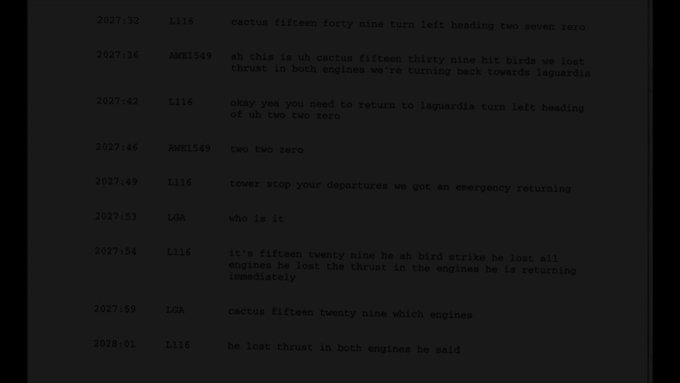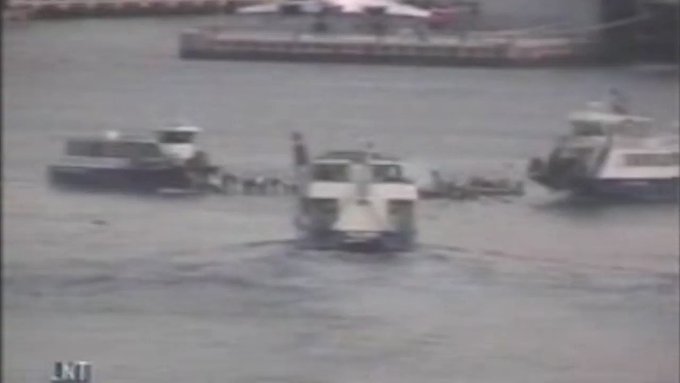
Captain Chesley Sullenberger, who was portrayed by Tom Hanks in the movie Sully, was hailed for the incredible landing of US Airways Flight 1549, a landing that came to be called Miracle on the Hudson
It was a completely routine and unremarkable flight. For 100 seconds. And then: "This can't be happening."
On January 15, 2009, US Airways Flight 1549, an Airbus A320 aircraft carrying 155 people lost both its engines seconds after takeoff. The flight was less than 3,000 feet in the air (the Statue of Unity is around 600 feet, for comparison) and there was no way it was going to be able to land on a runway. Or, even any ground.
Less than four minutes after its engines shut off midflight, Flight 1549 landed on the Hudson River, which cuts through New York City. All 155 people onboard that flight escaped alive.
It was a miracle, in fact newspapers carried banner headlines calling the accident Miracle on the Hudson, and the person behind this miracle was Chesley Sullenberger, the captain of Flight 1549.
You probably recognise him as Tom Hanks, who played Chesley Sullenberger in the 2016 biographical drama Sully. Hanks's portrayal was gritty and realistic. The film -- and Hanks' acting -- received universal praise (read IndiaToday.in's review of Sully here). And, we're sure that you have seen the film.
But, nothing can beat hearing it straight from the horse's mouth, and thanks to social media, we can now.
This week, real-life Chesley Sullenberger revealed what the fateful day of January 15, 2009 was like for him.

The real-life Chesley Sullenberger (L) and Jeff Skiles. Reuters photo.
Earlier that week, Sully, as he was popularly known, had begun a four-day trip. On Monday, January 12, he flew from Charlotte, a city in the US state of North Carolina. On Wednesday, he was in Pittsburgh on a long layover.
The morning after, Sully flew to New York City from where he and his co-pilot, First Officer Jeff Skiles (Aaron Eckhart played him in the movie Sully), were supposed to fly the last leg of their trip -- a New York City-Charlotte service.
On arriving at the LaGuardia Airport in NYC, Sully and Skiles filled their jet with fuel.

The fuel slip of US Airways Flight 1549 (Photo: Twitter/Captsully)
At 15:24:54, "First Officer Jeff Skiles and I were ready and LaGuardia tower cleared our flight... for takeoff." The flight was identified as Cactus 1549 during the communication between the air traffic controllers and the flight's pilots.
For Sully, it was a perfectly normal flight. "Like nearly every other flight I'd had for 42 years, #Flight1549 was completely routine and unremarkable," Sully says. "For the first 100 seconds."
During those seconds, Flight 1549 continued climbing and Skiles, who was at the controls, completed the post-takeoff 'checklist' (a checklist contains a series of tasks pilots must perform at different stages of a flight).
And then, all hell broke loose.
"I saw the birds three seconds before we struck them; we were traveling 316 feet per second and could not avoid them," Sully says. The next few seconds had a helpless Sully and Skiles staring out of the cockpit as the birds struck their plane.
"We could feel and hear the thumps and thuds as we struck the birds, followed by a shuddering, and then a rumbling sound coming from the engines. We felt them rolling back," Sully says, describing the moment his plane's engines shut down, i.e. rolled back.
"We got one rol- both of 'em rolling back," Sully had said in the cockpit then as his engines made the "most sickening, pit-of-your-stomach sound, 'whoooooooo'..."
Sully says that it was a "sudden, complete, symmetrical loss of thrust." He had "never experienced anything like it before."
"This can't be happening," Sully thought to himself, a "typical thought, rooted in disbelief" that then became, "This doesn't happen to me."
Sully finally came to the realisation that his flight "would probably not end on a runway with the aircraft undamaged". And so, within two-and-a-half-seconds of Flight 1549 hitting birds, Sully began to take action.
"I turned on the engine ignition and started the aircraft's auxiliary power unit," Sully says. The first was an attempt to re-start the engines while the second action was meant to provide backup power.
The second action was extremely important:
- The Airbus A320 that Sully and Jeff Skiles were flying was a 'fly-by-wire' aircraft -- the pilots did not directly control the plane's movement
- The pilots' actions on the plane's controls were converted to electric signals that were sent to the aircraft's wings
- Essentially, without power, the pilots of Flight 1549 had no way of controlling their plane. They could not go up and down, nor left or right
Turning on the APU, or the auxiliary power unit, ensured that the pilots had some power that would help them control their plane, which was now literally falling out of the sky.
After turning on the APU, Sully took control of the flight.
The next few seconds had Sully and his co-pilot frantically trying to figure out the best course of action. "Even though Jeff and I had just met for the first time three days before, if you had watched us work together, you would have thought we had been for years, because we were able to collaborate wordlessly in an emergency when there was not time to talk about it."
Sully says that he was aware that every decision he took would be scrutinised endlessly. But that, he says, did not stop him from "making hard choices and sticking with them".
Around 20 seconds after losing power in the two engines, Captain Sully sent out the distress call: "Mayday mayday mayday. Uh this uh Cactus fifteen thirty nine hit birds, we've lost thrust in both engines we're turning back towards LaGuardia [Airport]."
The air traffic controller -- a guy called Patrick -- "immediately began to try to get us back to a runway at LaGuardia".
However by then, Captain Sully had realised what his ultimate fate was going to be. "We may end up in the Hudson," Sully told Patrick, who was still "determined to try to find a way to get us to a runway".
At 15:29:2 -- two minutes and 18 seconds after the bird strike -- Captain Sully repeated what he had said earlier. Only this time, he was surer. "We're gonna be in the Hudson."
Sully was attempting something he had never done or even practised before. "This was a novel event that we had never trained for... Yet, I was able to set clear priorities. I took what I did know, adapted it, and applied it in a new way to solve a problem I'd never seen before," Sully says.
Taking stock of how much time he had, Sully arrived at his goal: "I was willing to sacrifice the airplane to save lives."
"I realized the only other place in the entire New York Metropolitan area, one of the most densely populated and developed areas on the planet, that was long enough, wide enough, and smooth enough to even attempt landing a large, fast, heavy jet airliner was the Hudson River," Sully says.
After making his decision, Sully proceeded to make his one and only announcement to the passenger and crew. To do that, Sully took an "extravagant amount of time" of three or four seconds.
For he wanted to choose just the right words. "I wanted to sound confident because I knew courage can be contagious."
"This is the Captain. Brace for impact," Sully told the passengers. "Immediately, I heard the flight attendants start shouting their commands to the passengers - 'Brace, brace, brace! Heads down! Stay down!'"
Sully then began to carefully manoeuvre his plane in order to land on the river. His co-pilot Jeff helped him.
"Jeff intuitively knew he should help me judge the height above the river to begin the landing by calling out airspeed and altitude," Sully says.
And then, the plane landed.
"While the impact was hard, I could tell the plane was intact and floating. Jeff and I said almost in unison - 'That wasn't as bad as I thought'," Sully says, recalling the moment his plane landed on the Hudson River.
Over the next few seconds, the flight attendants began the evacuation. Some passengers went out on the plane's wings. The others jumped onto the plane's rafts.
And within four minutes, the first rescue boats began to arrive. Slowly and steadily, the passengers and the crew reached land.
Captain Sully had lived to tell an incredible tale. But his job wasn't over.
On the ferry, once he realised that his phone was dry enough, he called US Airlines to tell them about what had happened.
Sully got in touch with the airline operations manager. That person, however, cut Sully off saying he could not talk since they "had a plane down in the Hudson."
"I know. I'm the guy," Sully said.




EmoticonEmoticon